
Hiking Dude Blog
2025 - Aug Jul
2024 2023 2022 2021 2020 2019 2018 2017 2016 2015 2014 2013 2012 2011
03/23/2020
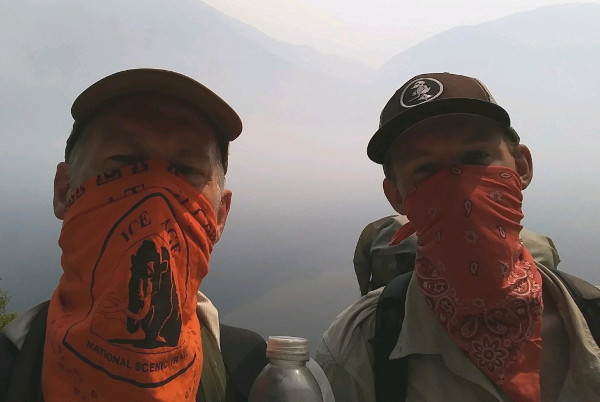
Did you plan on doing a long hike this year? Maybe a thru-hike of a long trail? Well, the Pacific Crest Trail Association, Appalachian Trail Conservancy, Continental Divide Trail Coalition, Ice Age Trail Alliance, Florida Trail Association, Arizona Trail, and probably every other long trail support group have cancelled all events, closed their offices, and recommend using local trails rather than doing thru-hikes. A bandanna over your face isn't really gonna cut it.
Hiking Anyway
Some folks are of the opinion that, being America and all, we've got the right to hike! Sure, being in the fresh outdoors is certainly healthier than being in a confined building day after day, and our country's long trails can still be hiked. But, besides the disregard to recommendations from the trail associations, and unconcern about spreading the virus, someone that makes the decision to do a long hike now will have extra challenges, such as:
- Facilities closed in trail towns - restaurants, laundromats, stores, and other businesses will not provide the usual support
- Hitch hiking - expect to walk that mile or three to town rather than getting an easy ride to town and back to trail
- Trail Angels - don't expect any free food, free rooms and showers, shuttling, or any of the other free support often found
- Hostels - closed down just like the hotels, motels, and BnBs
- Medical Support - sickness or injury will be up to you to care for with small, local doctors overburdened with current patients. Search-n-Rescue will also be hindered so you're on your own to survive
- Camping - local, state, and national park camping facilities being closed means stealth camping and locked bathrooms. Expect the same at private campgrounds, too.
Giving Up
Then there are those who have given up their plans for a thru-hike this year. Even in the best possible case of virus containment, there will not be enough hiking days available to complete the trail they had planned. Sadness and frustration abound in this group, but all is not lost!
Virtual Thru Hike
You can virtually hike your trail while staying safe and doing some good where you live. Here's how:
- Get up at 5am.
- Use gmap.pedometer.com to lay out a 10-mile route around your community.
- Hike this route in 3 or 4 hours.
- Get home by 9am for the rest of your day.
- Repeat making new routes and hiking them for 1 month, or 10 months.
- Feel free to take a bag along and pick up litter along the path.
- Congrats! You completed your thru-hike!!! and it looks something like this...

The image above is my Superior Hiking Trail VTH (virtual thru hike) I completed the past two months. The circle is about 6 miles in diameter. I hiked for 90 to 100 minutes 5 times a week for 10 weeks.
Now, I'm working on my Arizona Trail VTH which will be 800 miles. I hope to finish by the 4th of July.
I still hope to do some multi-day hikes this year, but they will only happen if official guidance approves of the activity. And, I plan on using these parameters:
- No resupply - I'll carry all my food from the start so I don't need to interact with trail towns.
- No communal shelters or hostels - I'll sleep in my own shelter away from any other people.
- Emergency Support - I'll carry a SPOT Messenger to track my path and alert help in emergencies.
- Real Wilderness - my treks will be on less-used trails at a less popular time of year where I'll likely encounter no one else.
Where will you be hiking this year? Did you change plans for a hike, or are you hiking your plan, or are you waiting to see how the virus situation evolves?
Hike On!
Posted: 03/23/2020
03/05/2020
You've probably seen many examples of the You're Better Than Me meme by now. Well, here's a version I made:
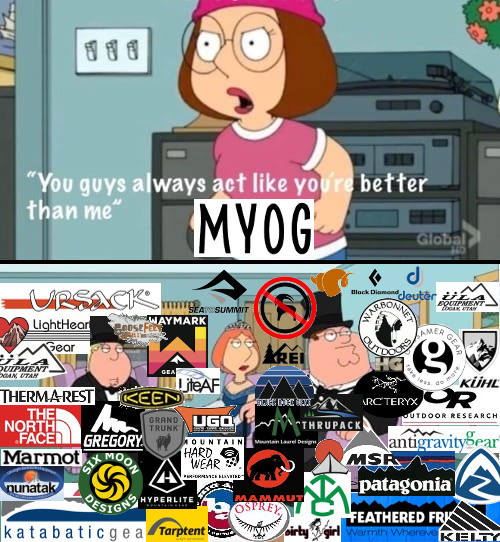
Most of those are good companies with fine products, so I hope they have a sense of humor. :-)
Making your own gear (MYOG) is a great way to get equipment that fits your needs, saves you money, and is well made.
There! I said it, and I'm proud to be a MYOGer! No more waiting for nightfall to set up camp to hide my MYOG quilt. No more keeping my MYOG pack covered with a trashbag. Let everyone see my label-less equipment!
Sure, some items such as water treatment, shoes, and hiking poles make more sense to purchase but you could make them if you wanted. Lots of other equipment can be made yourself to exactly your own specs. Purchasing materials is almost always cheaper than purchasing a finished product, and it's great learning if you don't mind a little effort.
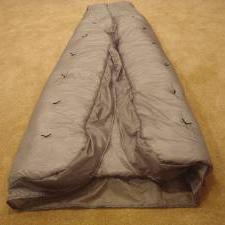
I made my first pieces of gear in 2012 for my Arizona Trail thru-hike - a quilt, backpack, and shelter.
- My silver quilt had two layers of polyester insulation between a shell of silnylon fabric. 8 years later, I'm still using that quilt! It has been used for over 200 nights of sleeping outdoors. A quilt like this is a simple piece to start your MYOG journey. The sewing is all basic, straight stitches that you can do on any sewing machine. It weighs a bit over 2 pounds and has been warm down to the mid-20s.
- I made a 1-pound backpack myself for the AZT. I still have it, but it's on its last legs now. A pack is more challenging, but step-by-step instructions helped me create something I was quite proud of.
- For an experiment, I sewed a shelter out of silnylon. I designed it myself, created a model to size out of brown paper, and then used that pattern to make the prototype. It worked, but there are plenty of ways to improve it.
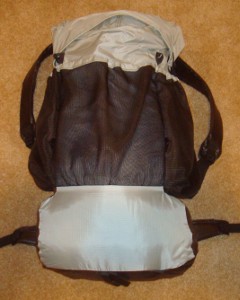
These three items weigh 4.9 pounds, reducing about 6 pounds from my equipment load. Eight years later, they are still usable (except the pack is wearing out). I spent $220 on materials and patterns. I'm not sure how many hours I spent making them, but it was around 40.
I made a 2nd backpack and quilt, using the same patterns. The quilt has one layer of insulation, making it lighter and smaller but less warm. My son and I used the two packs and quilts on our Florida Trail hike and Pacific Northwest Trail hike. I've also made a hat, arm warmers, underlayer jacket, and miscellaneous other items.
Three things seem to prevent people from making their own gear: not knowing how, not believing it will be good enough, and brand envy.
I can't help you with brand envy except to tell you that many ultralight people remove the tags and labels anyway.
I'm absolutely sure that MYOG items can be good enough, and better than, mass produced items that cost much more $$$ - mine have held up wonderfully.
As far as the difficulty of MYOG, I'm an old man and I found it pretty easy to lay out, cut, and sew materials - and it was fun. You'll make a few mistakes when learning, but it's a rare mistake that can't be fixed.
So, these MYOG items are fun to make, are economical, are the exact size I want, and hold up well. There's no reason not to try making something yourself.
Have you made any gear, or want to try?
Posted: 03/05/2020
03/02/2020

With the warming sun, our mountains of snow along the roads and trails become dirty and then gradually melt away. What they leave behind is like the receding glaciers - piles of debris that has built up over the short ice age from November thru February. Unlike glacial debris, what we find every March is trash (and too much dog poop) which doesn't belong there.
As long as I'm out there, I pick up what I can and recycle or dispose of it (but not the dog poop). I've found it's a little more interesting to make up a story about the trash I collect, so here's A Sad Story for you...

Once upon a time, a guy from Iowa got a call from friends in Minnesota. They said, 'Dude, let's party! Tonight!' So, he left work early, hopped in his car and headed north. He did a great job of staying hydrated by drinking water, Powerade, and a couple Monster fuels. Along the way, he got hungry so he stopped for a quick bite at Taco Bell.

When he reached Minneapolis, he checked into the Marriot where he planned on crashing after a night of partying with his BFFs. He took a shower, put on deodorant, and brushed his teeth with a brand new toothbrush he bought when he stopped for gas earlier. Then, he headed out to meet the gang.

Man, oh man, what a party!!! They drank lots of beers, chewed a little tabacco, and smoked while they caught up on old times. After awhile, that got a little old as they got a little lit, so they moved up to the stronger stuff. Captain Morgan, Fireball, vokda, and whatever else they could find kept them hopping late into the night. Time flew by.

Just as the bars were closing, and he was looking for his Marriot's cardkey to go hit the hay, his phone rang. There was an emergency at work and, if he wanted to keep his job, he had to be at work before the sun came up in the morning! Being a loyal, but inebriated, employee he left his friends, hopped in his car and raced south.
As you might expect, all that alcohol caught up to him and he became drowsy. He slapped himself a few times and pulled into a gas station. There, he bought some Monster fuels and some Energy Extra shots to get him home. That worked for a few more miles, but not long enough.
Somewhere in the night, in the beautiful Iowa countryside, he finally fell asleep and drifted off the road where his car crashed into a herd of sleeping cows, tipping 23 of them over.
So Sad - almost as sad as finding this much trash along a 2-mile stretch of bike path. We are all grounds keepers so please trash your trash, leave no trace, and care for the planet.
Hike On!Posted: 03/02/2020
02/28/2020
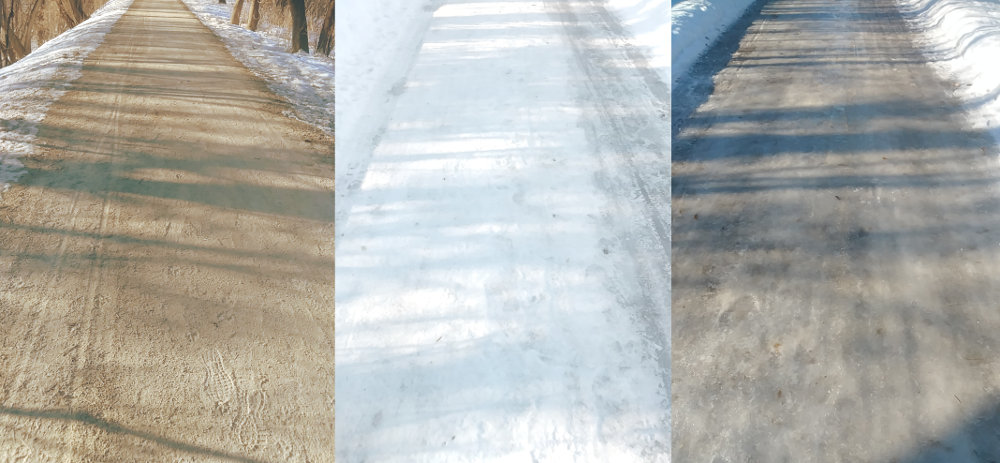
It's treacherous on the trails this time of year, for sure. We're in the midst of days warming up but nights still being freezing cold. This freeze - thaw - freeze - thaw daily cycle creates dangerous terrain on trails, paths, and sidewalks. Now, my friend Bren in Alabama can ignore this post (Hi, Bren!), but this bit of advice might help keep the rest of you upright and out of the doctor's office.
I noticed that:
- During the spring, summer, and fall, trails can be wet and muddy, or dry and dusty, but the risk of slipping is slim when the trail is tan.
- During deep winter, all trails are white - completely covered with snow and not very slippery. The snow makes going tougher, but actually slipping, falling, and getting hurt is not a big concern.
- It's the early spring or late winter that is especially slippery and risky to be out walking. Daytime sun melts snow enough to flow water over the trail, but not enough to dry it out. Once the sun gets low enough for the trail to be in shade, the cold air and subterranean ice work to freeze the new water into a shiney, smooth, slick surface of gray ice suitable for iceskating.
If you're like me, you can't sit at home and not hike just because the trail is a bit menacing. We go out and we take our chances, probably pussyfooting along not really enjoying the walk. Well, today I realized that I've developed an easy-to-remember method for picking my safest way along a trail this time of year. I'm calling it the TWiG Safety method.
TWiG is how to remember the relative safety of the different colors of trail you may need to walk on. It goes like this:
- Tan - dirt, gravel, leaves are all tan or brown and tend to have friction and are the safest.
- White - snow is the next best. It can be packed and slick, but usually has some grit to it.
- Gray - the most dangerous because it is ice and probably very slick.
So, while briskly hiking down the trail, I scan ahead to see what colors are there. All Tan and I'm good to go, some White and I avoid it, but as Gray shows up I use the white snow and avoid the ice. If there's no option but gray ice, then I slow down and take no chances by slow stepping as needed.
Just Remember TWiG - Tan, White, Gray for safety and your hikes will be safer and more enjoyable.
Hike On!
02/04/2020

Last year, my fellow hiker, scouter, blogger, and all-around good person named Super Jen or Wandering Pine, participated in the third year of a trash collecting program put on by Granite Gear. Granite Gear is based in Two Harbors, MN and sells outdoors gear. They are also aware of our responsibility as adventurers in the outdoors to take care of all our natural places. To that end, they created The Grounds Keepers to help enable and motivate folks to leave it better through removing trash found in the wilds, and have removed over 10,000 pounds of trash in its first 3 years.
Anyway, Granite Gear is continuing the Ground Keepers in 2020 and I've been asked to join the team! Well, actually, I asked to join, but they accepted me!
As a Grounds Keeper, I'm committed to hike at least 300 miles of trails, pick up whatever trash I find and can carry (not old car chassis), and report back monthly. Gosh, I do that anyway as a Leave No Trace educator, so it's a perfect fit for me.
I expect to hike over 1,000 miles on local trails near home throughout the year, plus these anticipated trips should give me plenty of trail miles:
- Florida - Done - While visiting the in-laws in January, I hiked about 50 miles on beaches and trails, collecting 21 pounds of trash, mostly one big hunk of marine waste on the beach.
- Two Appalachian Trail Trips - in May and July, we'll be visiting the south and north ends of the A.T. for a book I'm writing. I expect plenty of opportunities to clean up.
- Cloud Peak Wilderness - a week of wilderness backpacking where most trash will be around old campsites and probably quite rare.
- Kekekabic Trail - a remote, 43 mile Minnesota trail with little traffic so I might need to hunt hard for trash.
- Border Route Trail - another Minnesota wilderness trail, 65 miles long and hopefully clean.
My personal goal is to remove an average of 1 pound of trash each day - that would be 365 pounds by year's end. We'll see how I do. Oh, and that does not count my own trash I generate on my trips.
Super Jen is also a repeat member of the 2020 team. You can see the entire 30 person 2020 Grounds Keepers team - they're a motley crew for sure.
A slogan of this program is Leave It Better, and I want to share my thought about that slogan. Generally, people say 'Sure, it makes sense to leave it better,' but from my experiences, 'Better' means something different to different people. Someone might feel that cutting some logs and building a bench makes a remote campsite 'better'. Someone might feel stacking rocks, weaving branches, or arranging found bits of nature into artwork is 'better'. Someone might feel marking a shorter route than the worn trail is 'better'.
So, I really like that the goal of Grounds Keepers is to remove human trash - it's a specific, tangible, measurable activity that is not a general feeling for us all to interpret. We are removing things that were put there by humans and serve no purpose - makes sense to me.
These are the socially responsible companies sponsoring the 2020 Grounds Keepers program, and the bling they provided each of us. Later this year, I'll share how well these items worked for me:
-
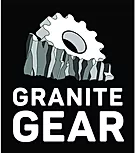
Ultralight Virga 2 backpack to carry my home on the trail. Plus, a couple stuff sacks and a scale to weigh the trash I find.
-

Nice pair of TR1 trail shoes so I can cover more miles, and I guess find more trash.
-

Lightweight inflatable sleeping pad. Need a good night's sleep to lug all that trash.
-

Eight backpacking meals. These will be new for me to try since my long hike nutrition tends to be poor.
-

Metal water bottle. I'm looking forward to sharing before and after photos of it at the end of the year. Member of 1% for the Planet.
-

Kula Cloth - my wife is very happy that this was provided.
-
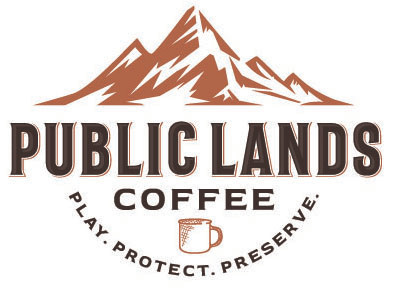
Camp mug and a big bag of sustainably sourced coffee to get us started each morning. Well, I hope they don't mind me using the mug for cocoa and my wife loves the coffee. They contribute proceeds to outdoors volunteer efforts.
-
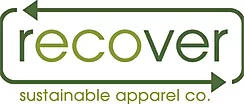
Earthy green 'Grounds Keepers' t-shirt made from old plastic bottles - I'll be wearing it on trail, so look for me! They've diverted over 8 million bottles into new clothing, so far.
-

Lightweight, super bright headlamp for finding more trash after the sun sets.
Hike On!
Posted: 02/04/2020
01/29/2020
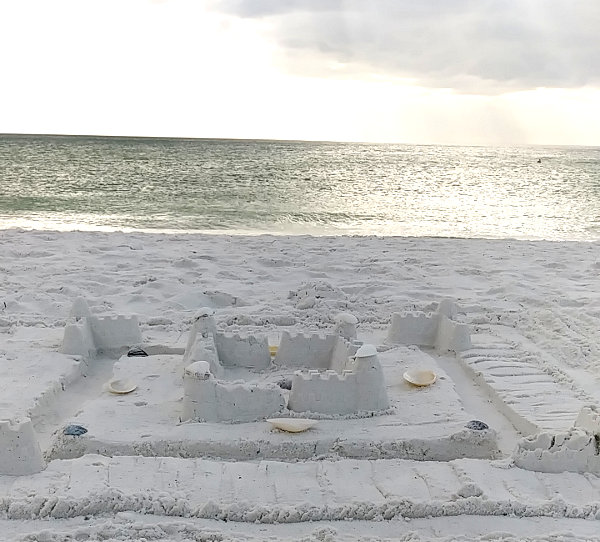
Enjoyed a wonderful short week on Marco Island in Florida! It was a nice treat to escape the frigid Great White North for a few days, but now I'm back to my daily hikes all bundled up from the frosty wind chills.
I got to hike every day in Florida, walking 4 miles the afternoon we landed and finishing with 14 miles on the last day. With a few bicycle rides thrown in, I got plenty of movement to work off the succulent seafood dinners I was forced to endure. :-)

The Marco Island beaches are beautiful and they get a ton of people since there are many huge hotels lining the beach for almost 3 miles. I was expecting hoping to walk the beach and clean up some trash at least a couple days. To my surprise, the beach was nearly spotless! Maybe it's because the average age is over 60, but folks really do a great job of cleaning up after themselves here. So, I got to enjoy the osprey, pelicans, and many other sea birds along the beach. The sand, water, and weather were all perfect for the entire time.

I did manage to find some trash on the far northern end of the beach where fewer people explore. Just a few plastic cups and bottles, but also this very cool, barnacle covered, tank. The handle and fixtures were brass, but the tank had rust, so I'm not sure exactly what it was, but it weighed over 20 pounds and I carried it over 2 miles off the beach.
I found plenty more normal trash along the pathways and parks in town and filled a couple bags.

As a special hike, we headed east to the southern terminus of the Florida Trail at the Oasis Visitor Center in the Everglades. From this point, the trail heads north up the spine of Florida and then cuts west to the far tip of the panhandle, ending about 1200 miles from here. I hiked about 400 miles of it a few years ago. That was an extremely wet year, with water to our knees, but this year the trail is clear and dry.
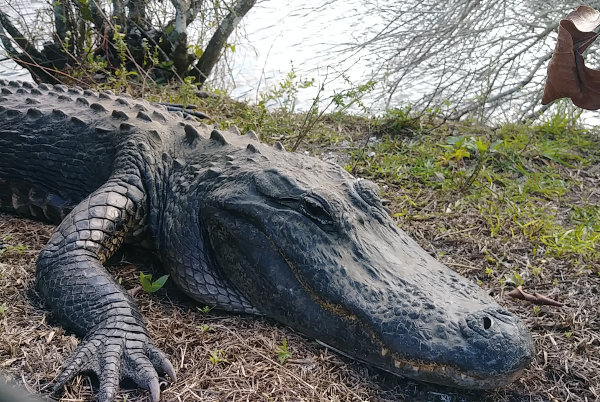
Along our 8-mile out and back trek, we saw no wildlife but did run into 11 other hikers. None were doing a thru=hike, but a few were heading out for a couple days. When we got back to the visitor center, we did come across this alligator with no worries in the world.
Hike On!
Posted: 01/29/2020
01/15/2020
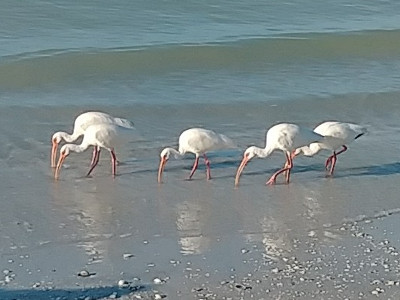
Sometimes best intentions don't turn out so well.
This morning, I hiked 7.5 miles around the island, including a nice, long walk up the beach at low tide. My plan was to keep an eye out for trash and pick up what I could find. To be prepared, I grabbed a plastic grocery bag and stuffed it in my pocket.
The hike was wonderful with water birds like these, some pelicans diving for fish, some big white fish doing big leaps with a couple fishermen trying to catch them, a couple joggers, lots of shell collectors, and hardly any trash at all.
I did manage to find an old rusty bottle cap and put it in my trash bag. Then, I stuffed the bag back in my pocket. When we reached the north end of the beach, there was a garbage can, so I figured I would deposit that one bit of litter.
When I reached in my pocket - no bag! I checked all my pockets - nothing. Somewhere along the beach, it had fallen out unnoticed.
With all the walkers on the beach, I'm very surprised someone didn't holler at me when it dropped. But, I'm sure someone picked it up. So, not only did I not find any trash to pick up (good thing), I actually made the place worse by unknowing dropping litter. Super Fail! Now, I have search harder for more trash to make up for today. Oh well!

Other than that, today's hike was great. Saw these burrowing owls again today, as well as dozens of other kinds of birds, from little brown chirpers up to big osprey, with ducks, cormorans, and gulls thrown in.
We did get the start of a couple blisters since quite a bit of walking on sidewalks is required to reach any trails or sand.
You can track my hike progress to see my route.
Hike On
Posted: 01/15/2020
01/02/2020
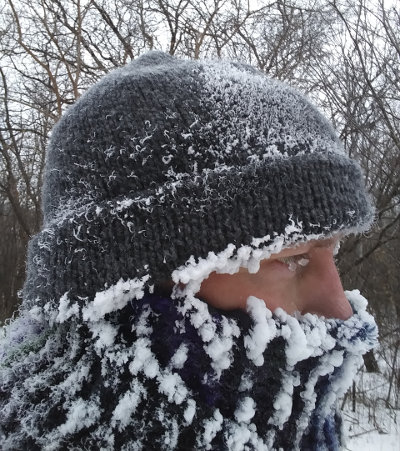
Whether you call them resolutions, goals, or dreams, it's good to occasionally plan what you would like to accomplish. Your plan can include short, mid, and long-term objectives - some big and some not so much.
In 2020, I hope to have a few adventures and produce something of value before the year is complete. I'll share my plan with you and hopefully have them all checked off in 12 months.
- Do 6 Hiking Adventures - I don't have any very long treks this year, but will do these:
- Florida Beaches - three days of hiking around Marco Island
- Two Appalachian Trail Trips - in May and July, but not a thru-hike
- Cloud Peak Wilderness - another week long backpacking trip in the mountains with some fishing and introducing newbies to backpacking
- Kekekabic Trail - probably a yo-yo of this Minnesota wilderness trail, about 85 miles total
- Border Route Trail - yo-yo hike of this other Minnesota wilderness trail, 120 miles
- Walk 1500 Miles - I'll do 25-30 miles a week on local trails, plus these other trips should reach the goal.
- Write 2 Hiking Books - I've started a book about the Superior Hiking Trail that I will finish, and I've been asked by a publisher to write a book about the Appalachian Trail.
- Do 2 Trail Work Trips - volunteer trail maintenance to keep the trails accessible to other hikers. Trail work is a great way to learn a trail, get exercise, meet fun people, and give back.
- Do 2 Hiking Presentations - Passing on knowledge and experiences to others is a good thing. Midwest Mountaineering puts on an Expo each spring and fall. I presented to about 100 people this past fall and hope to do it again.
In the next few posts, I'll tell you about a couple other exciting (to me anyway) things happening in my hiking world this year. It looks to be a fun, busy year ahead.
What about you? I'd love to hear about any hikes, treks, or adventures you plan to tackle this year...
Hike On!
Posted: 01/02/2020
11/18/2019

Kelly and I would love to have you visit with us on Sunday at our two presentations of treks we did this year. See Info about our talks, but here's what's what:

Climbing Kili: Sunday, Nov. 24, 10:30am in UofM Hanson Hall room 104
Find out what happens when 21 flatlanders from Minnesota (plus 1 from Australia) climb the highest mountain in Africa.
Paul and Kelly share how they prepared for, summited, and thoroughly enjoyed Mt. Kilimanjaro using the Lemosho Route, and offer up tips and advice on how to maximize your chances to do the same.
Free Tip: 'Porter Dodging' is a mandatory skill!
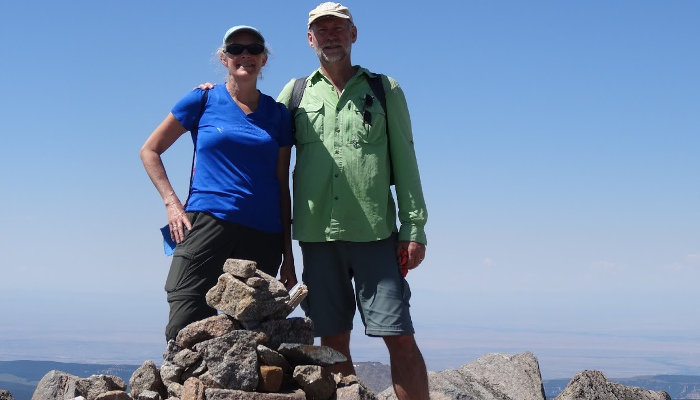
Cloud Peak Wilderness: Sunday, Nov. 24, 1:00pm in UofM Hanson Hall room 104
Looking to get away from trail crowds and above the trees? Wyoming wilderness has beautiful trails and BIG mountains only a day's drive from MN. Whether you want to summit a 13K+ peak, catch a hundred trout, or whirl around in an alpine meadow like Julie Andrews, the Cloud Peak Wilderness is perfect!
Kelly and Paul share highlights of their 6-day backpacking adventure and how to plan your own trek.
You should also check out All the Midwest Mountaineering Expo presentations to find others you'd like to attend.
Hike On!
Posted: 11/18/2019
10/29/2019


Always ready to experiment and learn about better, cheaper, lighter, or just plain different ways to do things, I got NorthSole to let me give their new insoles a try. My only compensation is receiving their Bundle Pack at no charge to test.
NorthSole is a Minnetonka, MN company so I'm really interested in seeing what a local company offers and see if it matches up to big, national brand products.
Features:
Aftermarket insoles range from $10 to over $100 and are marketed to perform a wide range tasks, from providing cushion to correcting foot problems.
These are NOT corrective inserts for any foot structural problems, arch support, plantar fasciitis, or supination/ovepronation challenges. These insoles are to provide comfort and a more enjoyable time on trail.
Northsoles are non-contoured so they provide benefits in minimalist no-drop shoes. This means they have no arch support or heel raise. This allows your foot to work they way it should rather than rely on external support. Some people need additional support, but I feel a medical or physical therapy professional should be consulted before modifying your foot support.
The insoles are made of three colorful layers. A black top layer gives your feet a bit of moisture wicking, grip, and softness. It is bound to a soft pink center layer that minimizes pressure points by forming to your foot. The bottom firm blue layer is mainly for shock reduction and durability. When you squeeze the northsoles, you can see the blue layer compresses much less than the pink.
Care:
Remove the Northsoles to air out and dry both the insole and shoe. Handwash occasionally to get rid of dirt and salt build-up.


My Experience:
I believe there is a trade off between cushioning and effort. Walking on the beach is an example.
Dry sand is very comfortable and absorbs any shock from stepping, but it takes much more effort to walk through than does wet sand. Wet sand is packed and firm. You can run on it easily but there is more jarring to your legs.
Insoles are similar. A thick cushion absorbs impact and requires more energy to walk. But, the extra comfort may be worth that loss in efficiency. Barefoot directly on the ground would be most efficient, but also too uncomfortable for most people to endure.
So, I like enough cushion to be comfortable, but thin enough to be efficient. Being able to feel the ground contour through my shoes is also a plus in my book - that's why I seldom wear thick-soled hiking boots.
I've now worn these Northsoles on my morning hikes and jogs for the past 3 weeks, more than 80 miles so far. They're a little dirty, but there's no visible wear so I expect they should last at least 500 miles.
For a bit more experimenting, I put my old factory insoles back in yesterday to see how they felt. After my 6 mile morning hike, some of my toes felt sore - not skin tender, but more like muscle sore. It was 31 degrees, so it could have been the cold. So, this morning with the temperature 28 degrees, I put the NorthSoles back in. After another 6 miles, my feet and toes felt fine. From that, I'll say the NorthSoles make my feet feel better.
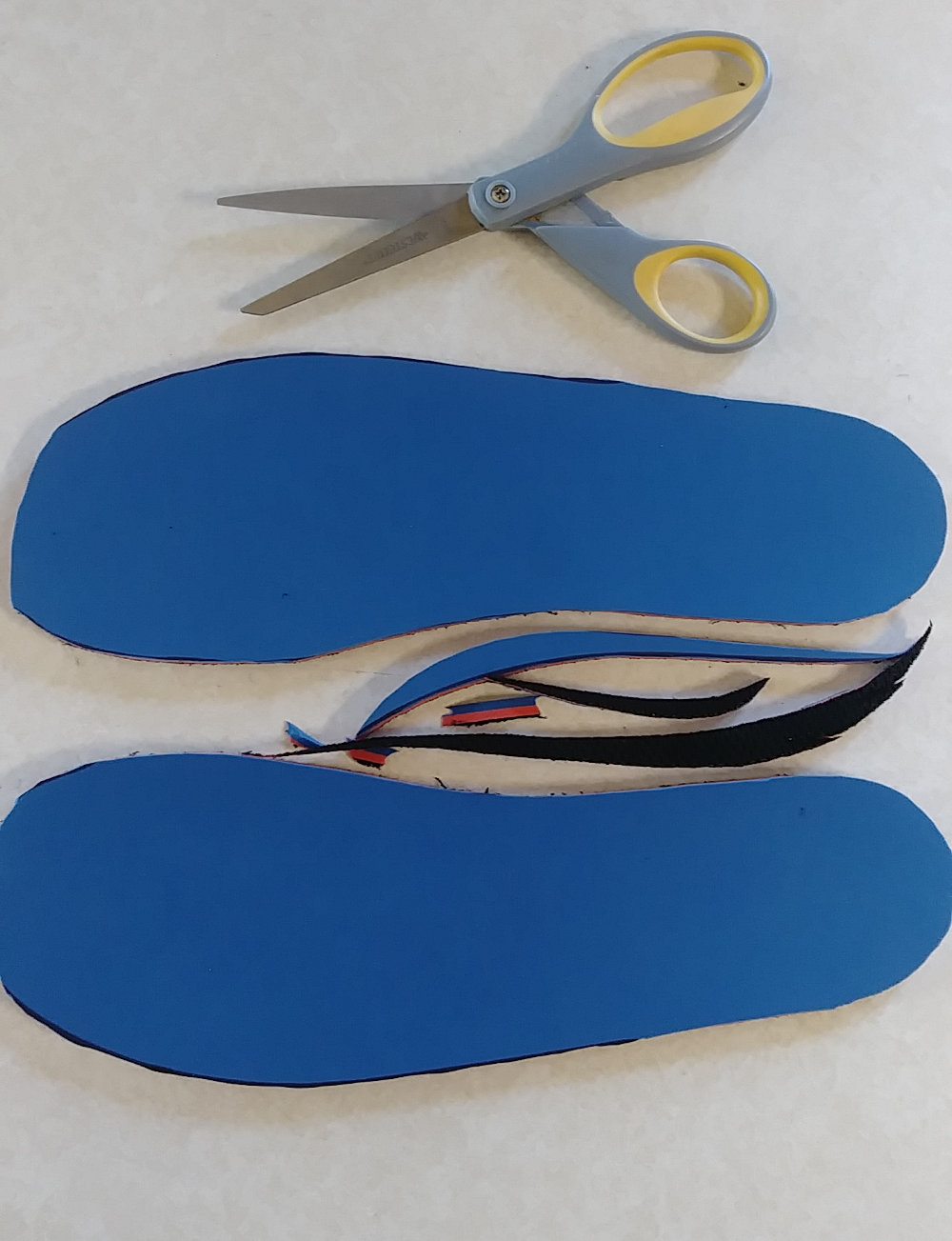

The NorthSoles were simple to start using. I slipped out the insoles from my shoes, traced their silhouette on the NorthSoles, cut them out, and slipped the NorthSoles into my shoes. Easy peasy. They fit fine and felt fine.
No complaints. But, they do cost $30 for a pair of 6mm, $25 for 3mm, or $50 for a 2-pack of the 6mm and 3mm. Prices include shipping in USA.
They come in S, M, L, and XL sizes that you trim to match your factory insole size. My size 13 factory insole just barely fit on their XL insole, so you might consider ordering a size up. But, when I let John at Northsole know, he said they'd be increasing the sizes a bit.
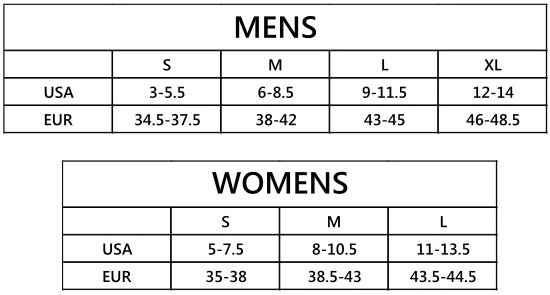
My factory insoles weighed 1.2 ounces for the pair (but they're junk). The 3mm NorthSoles weigh 2.0 ounces. The 6mm Northsoles weigh 3.3 ounces. I'm adding about 1 ounce per shoe by using the thicker pair. An ounce is less than 10% of most hiking shoes, but it's still extra weight. It's the old comfort vs. weight decision and, in this case, I think the comfort is definitely worth the weight.
Maybe they'd make a good stocking stuffer for someone you know - go to NorthSole to purchase direct from John in Minnesota.
Now, don't get me started about 'ankle support' from hiking boots over lightweight shoes - that's for another post.
Hike On!
Posted: 10/29/2019
Older Posts Newer Posts
Find more Hiking Resources at www.HikingDude.com


Follow Me
Recent Comments